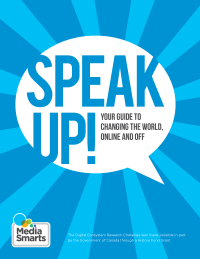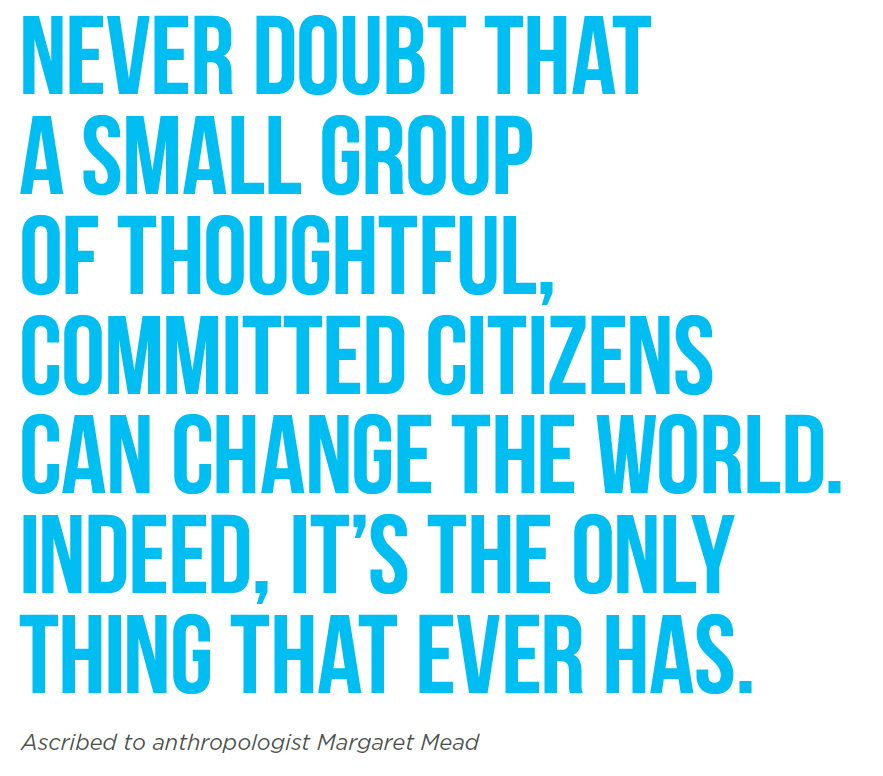Speak Up! Your guide to changing the world, online and off
 Thanks to the internet and social media like Instagram, Snapchat or TikTok, it’s easier than ever to share your views and encourage others to join you in making change. And, due to research conducted as part of the Digital Ecosystem Research Challenge (DERC), we know a lot about how some Canadians are using digital media to get involved in politics. This guide will help show you the ways you can use social networks to make your voice heard and make a difference.
Thanks to the internet and social media like Instagram, Snapchat or TikTok, it’s easier than ever to share your views and encourage others to join you in making change. And, due to research conducted as part of the Digital Ecosystem Research Challenge (DERC), we know a lot about how some Canadians are using digital media to get involved in politics. This guide will help show you the ways you can use social networks to make your voice heard and make a difference.
Check out the full guide here, or read on for a quick summary of how you can make a difference online.
How to interest a wide audience
Learn about issues.
Before you can educate others or advocate for your issue, you need to make sure you understand it.
A lot of people only hear about issues through what’s shared on their social media feeds. This can be a good way to get your news, but people who only get their news this way generally know less about political issues than people who seek out news and information. You can use hashtags or follow experts on social media, or go to news outlets or reliable sources to find out more.
Educate others and raise awareness.
Don’t just use facts and figures – tell a story about a person or group of people directly affected. In the age of social media, personal stories are a lot more likely to spread than facts and figures.
Don’t lecture to people, and don’t make your message all about risk or danger. It’s important to make sure everyone knows about serious issues, of course, but in general people respond better if you base your message on achieving something positive instead of avoiding risks.
Use images and video. Most social networks rank posts with images and video content higher, and people are more likely to interact with them too (sharing, clicking on links, etc.).

How to engage an interested audience
Share what you’re doing.
Sharing is what social media is all about, and it’s also one of the best ways to convince people who are interested in your issue to get more involved. The School Strike for the Climate started with a single strike in Stockholm, Sweden in 2018, and grew to as many as four million people the next year partly because people had learned about it through social media.
Another way of engaging people in a cause is to show them that other people believe in it. Most of us base our beliefs, at least partly, on what we think most other people believe, and social media can create a “majority illusion” that makes it look like the loudest voices are the majority. If your audience sees that lots of people care about your issue, it will make them a lot more likely to get involved.
Connect with other people who care about the same things.
Social media is also about making connections, and it can be a great way to find other people who care about the same issues as you. You can do things like search hashtags or see who other people are following to find allies you didn’t know you had.
Connecting can be a way for you to be an ally, too, and support people who need your help with their activism.
Amplify other people’s voices.
Don’t just use social media to promote your own voice: once you have a platform, you can use it to help other people be heard as well. You can do this through a hashtag that invites other people to speak out, but you can also make a point of inviting and sharing voices that might otherwise not be heard.

How to mobilize an engaged audience
Advocate for your issue.
There’s no shortage of ways that you can use social media to advocate for your issue. Because most politicians, corporations and government agencies have a social media presence, you can connect directly with them. You can also get their attention indirectly by tagging them or using hashtags.
Organize for online and offline action.
Whether you’re trying to change people’s minds, change the world, or both, you have a lot more impact when you’re not doing it alone. Social media can let you work together with people from around the world who care about your issue, and sometimes it can be the best way to organize people in your own neighbourhood.
Some platforms, like Change.org, Dosomething.org and Ushaidi.com, were made for activism, but you can use the platforms that you and your audience are already on too.
Energize yourself and others.
It can be hard to keep from getting discouraged, and even the most committed people in your movement can get burned out and drift away. You can keep them (and yourself) engaged by sharing your successes, and your frustrations too. Have fun and make it social by sharing funny memes and videos as well as more serious stuff. But remember that to keep your audience you must always be respectful – campaigns and their followers can quickly be lost by unkind or unfair content.
Read the full Speak Up! guide here.
The Digital Ecosystem Research Challenge was made possible in part by the Government of Canada through a History Fund Grant.
